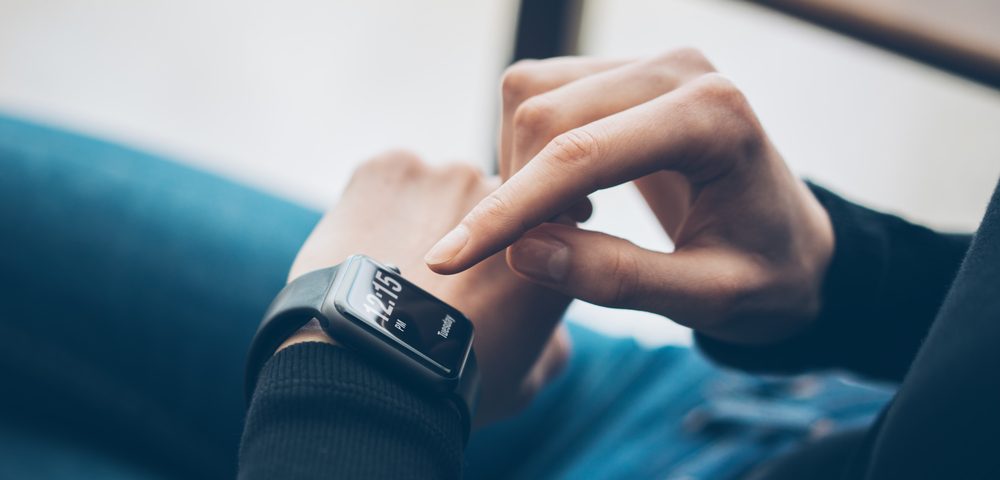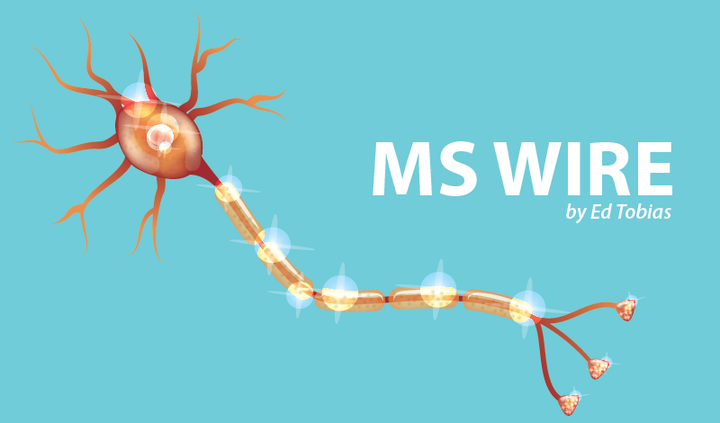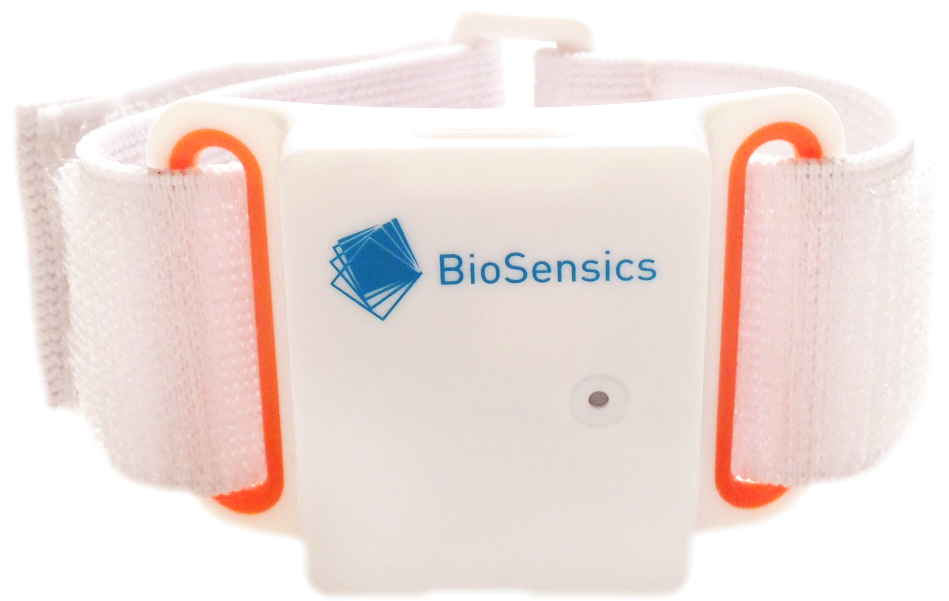Wearables Focus on Tracking Your Health
Written by |


I never thought I’d want a wearable internet device until I got an Apple Watch for my birthday. One of its neat apps tracks the laps that I swim, the steps that I (try to) take, and my pulse rate. The watch can even link up with some high-tech exercise equipment to monitor my gym progress.
A brand new version of the Apple Watch (the Series 4) came out just after I got mine and it has a new feature; one which many of us with MS might find particularly useful. It’s an “I’ve fallen and I can’t get up” alert. The watch contains an accelerometer and a gyroscope. By analyzing your falling speed and the angle at which you tumble, the watch can determine whether you’ve taken a hard fall or whether you’ve just stumbled. If it senses that you’ve fallen, it displays an alert saying, “It looks like you’ve taken a hard fall.” Then you have a choice: If you’re OK, you can cancel the alert. If you’re not OK, you can tap the face of the watch, initiating a call to an emergency number and family. If your tumble was really bad and you’re unable to trigger the emergency signal yourself, the watch will do it automatically if you haven’t moved for 60 seconds.
The Apple Watch 4 can also display an electrocardiogram (EKG) tracing of your heart. Just hold your finger on the crown of the watch for 30 seconds while the back of the watch contacts your wrist. The EKG recording is stored on your phone and then played back so your doctor can read it on your next visit. The EKG, however, is only a single “lead.” An EKG in a doctor’s office is usually 10 or 12 leads. An Apple Watch EKG is not something on which I’d place much diagnostic faith, but it’s probably an indication of things to come.
The wearable trend
Clinical trials are starting to use wearable devices. Rather than having to depend on a trial participant’s memory, the wearable can record information about that participant’s actions. For example, it can monitor vital signs in real-time or track when a medication is taken.
Do you use an Apple Watch, or another wearable device, for health-related purposes? Would you? Share your experience or thoughts in a discussion in our MS forums.
At John Hopkins University in Maryland, for example, they’re studying an Apple Watch app called EpiWatch. It’s designed to track epileptic seizures, their triggers, and the use of medications.

BioSensics’s LEGSys gait sensor. (Courtesy of BioSensics)
A company called BioSensics has developed wearable sensors for clinical use. One is designed to monitor the motor symptoms of Huntington’s disease patients. BioSensics has also created wearables that test balance, gait, and the risk of a fall. A company spokesman tells me that BioSensics has nothing in the pipeline that’s designed specifically for multiple sclerosis. However, it seems to me that MS diagnosis and treatment would seem to be a natural for their kind of devices.
Merging digital data and healthcare
Rock Health, which describes itself as a digital health venture fund, is betting on that merger of digital technology and healthcare. A survey it took last year of about 4,000 U.S. adults shows that 87 percent of them were using a digital health tool, (e.g., wearables, phone apps, or computers) in connection with some sort of health goal, ranging from just being more active to tracking medications and vital signs. Of the respondents, 24 percent were using a wearable.

Adoption of digital health tools.
(Courtesy of Rock Health)
Rock Health’s website says the firm believes “the purpose of healthcare innovation is to deliver value to patients.” One way to do this is to empower patients to “manage their health through increasingly self-directed, digital offerings.”
Selling that idea to people isn’t a slam dunk. Rock Health says challenges include people who stop using a wearable because it wasn’t effective, or they didn’t like its look or feel. There can also be problems with data accuracy.
The study also notes a significant privacy concern. “Though most respondents are willing to share health data with their physician [86%], there is a significant drop-off in willingness to share with other stakeholders. 58% are willing to share with health insurance companies and 52% with pharmacies.” That willingness rapidly declines when people are asked about sharing with researchers, pharmaceutical companies, or the government.
As we learn of more data breaches every year, I think it’s going to take a lot of work to maintain a high level of public confidence in the concept of sharing health information that’s collected on a wearable. But I’ll continue to use mine, at least to track my laps in the pool, my reps in the gym, and my walking. Let’s hope that I won’t need the watch that has the falling alert.
You’re invited to follow my personal blog at www.themswire.com.
***
Note: Multiple Sclerosis News Today is strictly a news and information website about the disease. It does not provide medical advice, diagnosis, or treatment. This content is not intended to be a substitute for professional medical advice, diagnosis, or treatment. Always seek the advice of your physician or other qualified health provider with any questions you may have regarding a medical condition. Never disregard professional medical advice or delay in seeking it because of something you have read on this website. The opinions expressed in this column are not those of Multiple Sclerosis News Today or its parent company, Bionews Services, and are intended to spark discussion about issues pertaining to multiple sclerosis.







Philip Sypula
I simply would like a ride to our Annual meeting just about 3miles from my home in two days. I gave my vehicle to my Son that is now in College, and I do not have a CAR. I've tride to text the leader (Mary) for the last two days in her office, and on mobile with no response. I do not want to ask my wife for a ride, because she has been working hard to support our family of 5 - (3 in COLLEGE rite now), and does not get home untill 7:30 every night. I know I'd get a ride home, after the meeting. HELP PLEASE
Ed Tobias
Philip,
Have you tried contacting your local chapter of the National MS Society? You can find its phone number on the website: www.nmss.org.
Ed
Lee Hartsell
Are you aware of the multiple ongoing studies that leverage wearables and other mobile devices for MS research and care?
Ed Tobias
Hi Lee,
No, I wasn't aware and I appreciate that you brought this to my attention. Can you point me towards some of these?
Thanks,
Ed
D Jackson
Since I purchased an Apple Watch (4) I have gone from bedridden to walk a minimum of three miles/day for 298 consecutive days. It has changed my outlook from "giving up" to "can do."
Ed Tobias
That's great. It's great to hear of people moving from giving up to can do. But I have to ask you, was it just having the watch that allowed you to do this. What else was at work here? I'd love to hear the rest of the story.
Ed